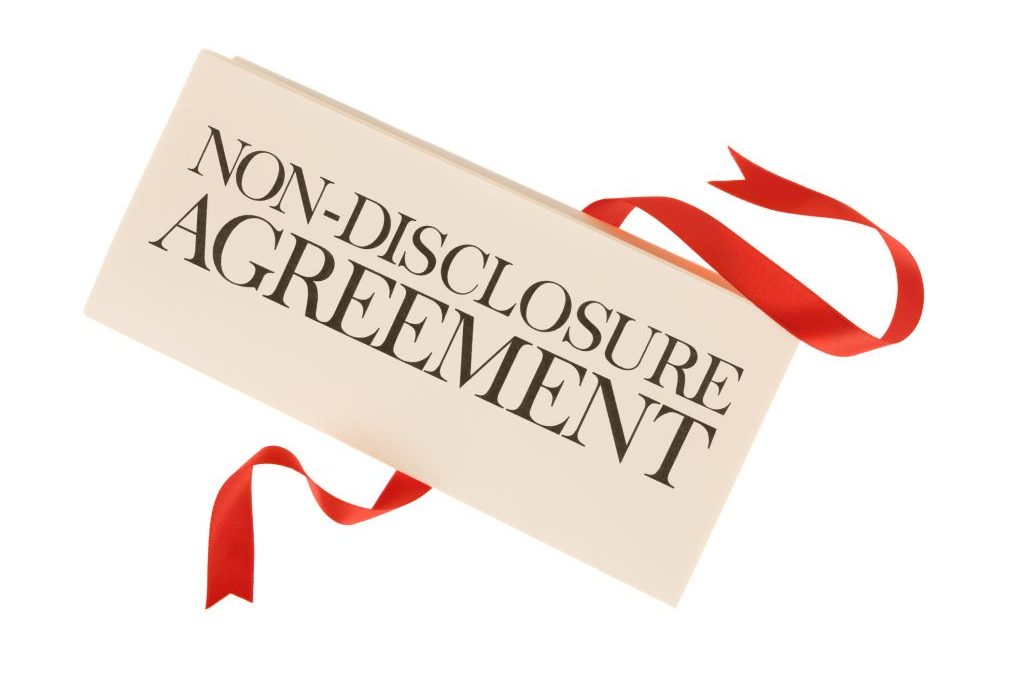A non-disclosure agreement (NDA) in electronic form forbids a third party from disclosing private information about your firm.

A non-disclosure agreement (NDA) in electronic form forbids a third party from disclosing private information about your firm. It has the same legal force as a paper version of the identical agreement. It normally goes through numerous rounds of changes as the parties discuss the agreement’s terms and conditions. An NDA is also known as a secrecy agreement.
Table of Contents
An NDA’s Purpose
An NDA will be exchanged between the buyer and seller in a merger and acquisitions (M&A) deal. This precludes a person or corporation contemplating the acquisition of a firm from disclosing information obtained during the selling process. The NDA is often prepared and performed by the buyer, but it may also be created and signed by the seller.
When a corporation assigns work to a freelancer, that person is often forced to sign an NDA. This stops the freelancer from releasing sensitive information obtained in order to execute the assignment at hand.
The Elements of a Non-Disclosure Agreement
The section on disclosure of information specifies the parties to whom information will be provided and the reason for doing so, such as in the course of a partnership or transaction. Most of the time, the person that gets the information will be able to share it with advisers, attorneys, and workers, but this is not always the case. One side is referred to as the “Receiving Party,” while the other is referred to as the “Disclosing Party.” In circumstances when the buyer has little assets, a guarantor may be specified.
The NDA specifies what material is deemed secret, including information, data, notes, and meeting minutes that are not previously publicly accessible. Make certain that the agreement states that all papers communicated with the opposing party will be regarded as secret; some agreements state that only agreements identified as confidential will be treated as such.
Certain material may be excluded from the confidentiality agreement without invalidating the agreement. Typical exceptions include:
Information revealed to or legally owned by the receiving party prior to the signing of the agreement
Information that was previously available in the public domain
Information that had previously been provided to the receiving party by a third party who was not bound by an NDA.
In the case of M&A negotiations, the NDA agreement should contain language indicating that the private information should be used exclusively to analyse the proposed deal and not for any other reason.
If the project or negotiation comes to an end, the receiving party is required to delete any electronic or physical data protected by the agreement. However, this may not apply to internal documents and electronic backups.
The NDA must only exist for a certain amount of time, often one to two years, as specified in the agreement. Some contracts come to an end when the project or transaction in issue is completed.
Restriction clauses prevent the receiver and its subsidiaries from seeking personnel from the other party. These rules may also prohibit the disclosing party from contacting the receiving party’s consumers.
The NDA must specify which state authority governs the agreement and which court will consider disputes if required. This is referred to as Governing Law and Jurisdiction.
The NDA’s text must explicitly identify that it is a legally enforceable agreement and specify the agreement’s purposes, such as exploring the viability of a business venture. It should be separated from a legally binding agreement to buy the company.
If the contract is broken, the repercussions for breach of secrecy clause permits the disclosing party to seek remedy, such as specific performance.
The Importance of Electronic Signatures
An electronic signature is regarded the same as a handwritten signature under state and federal law. For interstate or overseas transactions, the Federal Electronic Signatures in Global and National Commerce Act (ESIGN) applies, while for other kinds of transactions, the Uniform Electronic Transactions Act (UETA) applies at the state level. These regulations say that a contract cannot be ruled legally defective merely because it was signed and/or delivered electronically.
Contracts are the most common application for electronic signatures, and both parties must agree to use the electronic signature. Electronic signatures are not permitted on documents that must be notarized.
